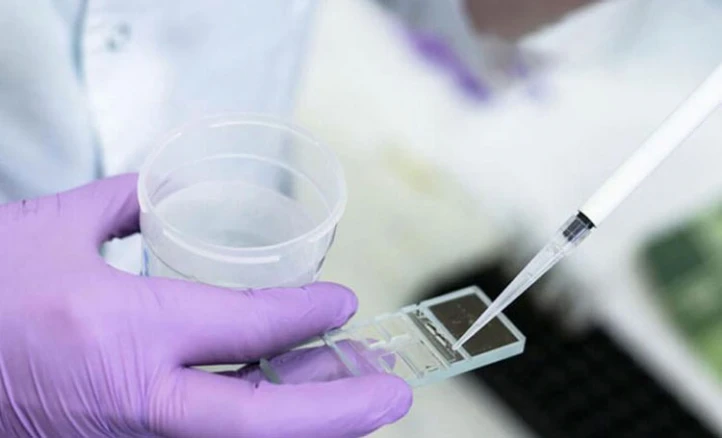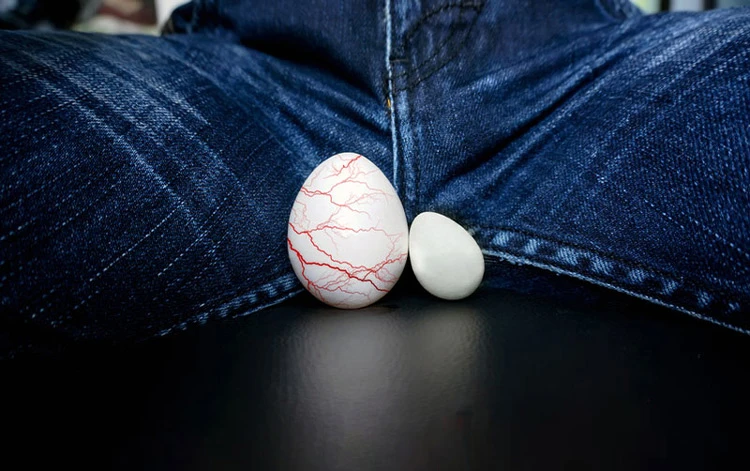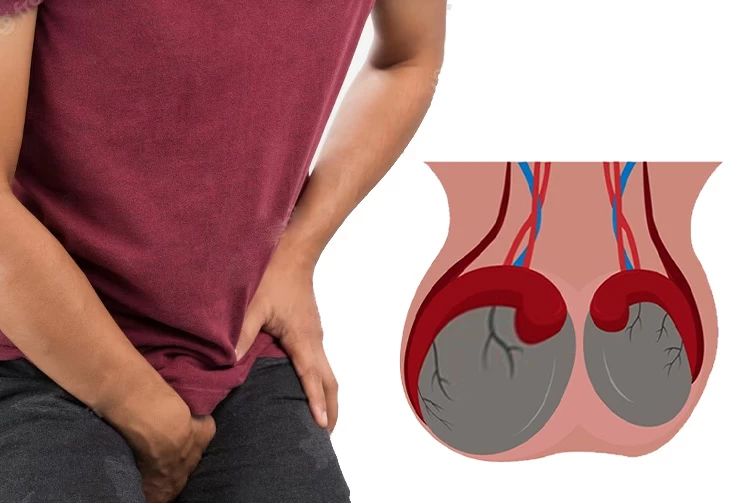Retrograde Ejaculation: What to Do If Sperm Is not Coming Out?
Fertility Treatment
Retrograde ejaculation is a male condition in which, during orgasm, semen is redirected into the bladder due to an obstruction in the urethra rather than being fully ejaculated out of the body (sperm is not coming out). While retrograde ejaculation can result in a dry orgasm, the term 'dry orgasm' may also refer to situations where little to no semen is expelled without being directed into the bladder.
In terms of male infertility, dry ejaculation can significantly reduce a man's ability to father a child, as the sperm is not being ejaculated into the woman's reproductive system. It can be caused by various factors such as certain surgeries, nerve damage, medical conditions such as diabetes or multiple sclerosis, or certain medications. As for retrograde ejaculation treatment, it may involve addressing the underlying causes through drugs or surgery to restore normal ejaculation function.
It should be noted that men experiencing retrograde ejaculation may still be able to have children through assisted reproductive technologies (ART). This can involve collecting healthy sperm from the urine after ejaculation to be used for in vitro fertilization (IVF). A crucial consideration for individuals dealing with dry orgasms is whether the condition is permanent. In many cases, timely and appropriate retrograde ejaculation treatment can improve or resolve retrograde ejaculation, enhancing the prospects of achieving fertility.
In this article, we will explore what retrograde ejaculation is, the retrograde ejaculation symptoms and causes, as well as its available treatment options. From lifestyle changes to medical interventions, there are various strategies that individuals can consider to address this condition and improve their chances of conceiving.

What Can Cause Retrograde Ejaculation?
The most common factors of retrograde ejaculation causes are as follows:
- Surgery
- Prostatectomy
- Nervous system disorders
- Diabetes
- Radiotherapy
- Medications
- Congenital conditions
Surgery
Specific surgical procedures, such as prostate surgery, bladder surgery, colectomy, or spinal cord surgery, may sometimes lead to retrograde ejaculation.
Prostatectomy
Retrograde ejaculation usually occurs in 10-15% of men who had prostatectomy to remove part of their prostate gland. The reason is that during prostatectomy, the structures that control ejaculation, such as the seminal vesicles and the internal urethral sphincter, may be affected or damaged.
However, men with past radical prostatectomy (the complete removal of the prostate gland and seminal vesicles) will no longer be able to ejaculate., which is not related to retrograde ejaculation.
Nervous system disorders
Spinal cord injury and nervous system disorders such as multiple sclerosis (MS) or Parkinson's disease can cause dysfunction of the internal urethral sphincter, leading to retrograde ejaculation.
Diabetes
Uncontrolled diabetes, which is one of the common causes of erectile dysfunction, can damage the nerves and organs that control ejaculation, leading to retrograde ejaculation.
Radiotherapy
Undergoing pelvic radiotherapy during the treatment of prostate cancer can cause pelvic damage and, therefore, increase the risk of retrograde ejaculation.
Medications
Some medications, primarily those used to treat high blood pressure (Prazosin), depression, or prostatic hyperplasia (enlargement of the prostate gland), can interfere with the muscle contractions that force semen out of the body, causing semen to travel backward into the bladder.
Congenital conditions
Some men are born with a congenital abnormality of the bladder neck, allowing semen to move to the bladder instead of being ejaculated through the penis.

How to Treat Retrograde Ejaculation?
Retrograde ejaculation may not require treatment in some cases. However, it should be cured if it leads to male infertility or sexual frustration. If the condition is caused by the surgical removal of the bladder neck, the treatment may be challenging. In this case, retrograde ejaculation treatment options can include procedures to retrieve sperm from the bladder for use in assisted reproductive techniques. However, doctors believe that male infertility due to retrograde ejaculation can always be treated, even in the complete lack of semen with ejaculation (aspermia).
Additionally, it is essential to note that men experiencing symptoms such as blood in semen, painful ejaculation, or frequent urination must see a doctor, as these symptoms may indicate conditions other than retrograde ejaculation.
Common treatments of retrograde ejaculation can be as follows:
Medications for retrograde ejaculation;
Medication can be used to treat retrograde ejaculation when the condition is caused by diseases such as MS and diabetes or certain surgeries. However, drug treatment cannot be helpful in patients with past bladder outlet surgery or prostatectomy. Additionally, discontinuing certain medications, such as alpha-blockers and antidepressant agents, which may cause retrograde ejaculation, can help cure the condition.
Medications such as imipramine, chlorpheniramine, brompheniramine, phenylephrine, midodrine, and ephedrine can help close the bladder neck during ejaculation, preventing the semen from entering the bladder. Taking these drugs within 2-3 hours before sexual intercourse can prevent retrograde ejaculation.
However, men with heart disease or high blood pressure cannot use medication to treat retrograde ejaculation. This is because drugs for retrograde ejaculation treatment can increase blood pressure and affect heart function. They may also cause a drug interaction.
Additionally, medicines such as imipramine, which have the same properties as epinephrine, can be prescribed when retrograde ejaculation is due to nerve damage to the bladder sphincter.

Surgery
Common types of testicular biopsy that are used to treat retrograde ejaculation are:
- Testicular Sperm Aspiration (TESA): During the TESA procedure, a small needle is inserted into the testicle to aspirate fluid and tissue containing sperm.
- Percutaneous epididymal sperm aspiration (PESA): This procedure involves using a needle to aspirate sperm from the epididymis, a small organ located near the testicle.
- Microsurgical testicular sperm extraction (TESE): This technique involves using a high-powered microscope and specialized instruments to identify and extract sperm from the testicle.
Assisted Reproductive Technologies
Assisted Reproductive Technologies (ART) can treat retrograde ejaculation by using techniques such as intrauterine insemination (IUI) or in vitro fertilization (IVF). It is essential to highlight that these methods involve the conception of fertilized sperm through a biopsy procedure.
- In vitro fertilization (IVF): IVF with ICSI can be used when the number of received sperm is very low. During this procedure, eggs are retrieved from the woman and fertilized with the retrieved sperm in a laboratory. The resulting embryos are then transferred into the woman's uterus.
- Intrauterine insemination (IUI): During the IUI method, the retrieved sperm is washed and prepared before being directly inserted into the woman's uterus, bypassing the need for ejaculation. This increases the chances of fertilization by placing the sperm closer to the egg.

What are the Retrograde Ejaculation Signs and Symptoms?
Retrograde ejaculation, or RE, can cause men to ejaculate very little or no semen, which may sometimes lead to male infertility. However, this condition accounts for only 0.3 to 2% of male infertility cases.
Additionally, retrograde ejaculation is not dangerous and painful, and the patient may not even notice he has it. Semen in the bladder can cause the urine to appear cloudy and dark after ejaculation. Also, some men with retrograde ejaculation may experience low sensation or pleasure during ejaculation. Exploring retrograde ejaculation causes, various factors such as nerve damage or conditions affecting the bladder sphincter can contribute to this unique reproductive issue.
The most common symptoms of retrograde ejaculation may include:
- Reduced volume of seminal fluid during ejaculation;
- Cloudy urine after ejaculation;
- Psychological problems during sex;
- Dry orgasm (ejaculation with no or little semen);
- Male infertility.

How to Diagnose Retrograde Ejaculation?
Diagnosing retrograde ejaculation typically involves a post-ejaculation urine sample. The presence of a large number of sperm in the urine sample can indicate retrograde ejaculation.
Diagnosing retrograde ejaculation may also include a medical history review by an andrologist that involves questions about any underlying health conditions, medications being taken, and any previous surgeries or treatments that could affect ejaculation. The andrologist may also perform a physical examination of the testicles, penis, and anus.
Suppose no sperm is found in the urine and bladder samples. In that case, the impaired sperm production can be due to factors such as past surgeries, damaged prostate, impairment of seminal vesicles, and pelvic radiotherapy. Diagnostic tests, such as ultrasound or cystoscopy, are performed to assess the bladder and urinary tract.

Pregnancy Despite Retrograde Ejaculation
Natural pregnancy with retrograde ejaculation is challenging but not impossible. In cases of retrograde ejaculation, the sperm may still be present in the ejaculate, but the volume may be reduced or the sperm count may be lower.
While some cases may not necessitate immediate treatment, addressing the issue is paramount in scenarios where fertility is compromised. The challenge intensifies when retrograde ejaculation stems from the surgical removal of the bladder neck. Nevertheless, viable retrograde ejaculation treatment options exist, including procedures aimed at retrieving sperm from the bladder for utilization in assisted reproductive techniques.
Despite the complexities, medical professionals assert that male infertility linked to retrograde ejaculation is treatable, even in instances of complete semen absence during ejaculation (aspermia). Seeking timely intervention is essential, especially for individuals experiencing accompanying symptoms such as blood in semen, painful ejaculation, or frequent urination. Consulting a doctor becomes imperative in such cases, as these symptoms may signify underlying conditions beyond retrograde ejaculation. By adopting appropriate treatments, individuals can enhance their chances of overcoming retrograde ejaculation and, consequently, improve their prospects of achieving fertility.
What are the Home Remedies for Retrograde Ejaculation?
Some retrograde ejaculation treatments at home may help manage the condition. However, it's essential to consult with a doctor to determine the underlying cause of retrograde ejaculation and develop an appropriate treatment plan based on your needs.
Research shows that Kegel exercises can strengthen the pelvic floor muscles that control ejaculation and may help cure retrograde ejaculation. Men can also manage this problem by eating a healthy diet, including carrots, watermelons, bananas, avocados, walnuts, asparagus, dark chocolate, and ginger honey.
Furthermore, making specific lifestyle changes, such as avoiding alcohol and drugs, quitting smoking, avoiding starchy foods and sugar, and managing stress, can help improve retrograde ejaculation.

Retrograde Ejaculation Side Effects
Retrograde ejaculation is not harmful and does not influence men's ability to get an erection and have an orgasm. However, it may cause male infertility as the sperm cannot be ejaculated out of the body as it normally would during ejaculation. Instead, the sperm is redirected into the bladder, leading to the release of low sperm count during sexual intercourse.
Despite its impact on fertility, retrograde ejaculation side effects extend beyond reproductive concerns. As mentioned, this condition accounts for a meager percentage of infertility cases, as couples facing male infertility can conceive using assisted reproductive technologies.
It should also be noted that the total sperm count in the semen for optimal fertility is about 60 million per milliliter. Therefore, if only 1 milliliter of the semen of a man with 3 milliliters of semen volume and 25 million sperms per milliliter travels backward to the bladder, the man is diagnosed with male infertility.
Additionally, retrograde ejaculation can impact sexual satisfaction, leading to emotional distress for some patients.
How to Prevent Retrograde Ejaculation?
Although retrograde ejaculation is not completely preventable, the following approaches may help to prevent the condition.
- Performing minimally invasive procedures such as TUMT and TUNA to prevent nerve and muscle damage in men with prostatic hyperplasia;
- Treating diseases such as diabetes;
- Following a healthy lifestyle;
- Addressing disorders such as blood in semen and erectile dysfunction that may contribute to the condition;
- Taking medicines on time, as prescribed (for diabetic patients).

When to See a Doctor for Retrograde Ejaculation?
As said earlier, retrograde ejaculation is not a health risk for men. However, no or little semen during ejaculation can lead to male infertility. Therefore, couples who could not conceive despite a year of unprotected sex should seek medical attention to determine the underlying cause.
Retrograde Ejaculation Frequently Asked Questions
1) What is a Dry Orgasm?
A dry orgasm is when a man reaches sexual climax but ejaculates very little or no semen. This condition is more common in older men and can occur due to physical or psychological disorders. While dry orgasm may not necessarily be harmful, it can be a cause for concern, especially in young men, and should be treated.
2) Why is there No Sperm Mutation in Retrograde Ejaculation?
When a man has an orgasm, the sperm moves from the Vas deferens (sperm duct) to the prostate gland. There, it mixes with prostate fluid to make seminal fluid. As semen passes through the prostate gland and enters the urethra, the bladder sphincter contracts to prevent semen from entering the bladder. However, in men with retrograde ejaculation, this muscle does not function properly, causing the semen to be redirected into the bladder instead. This can result in a dry orgasm and no sperm migration during ejaculation.
3) Is Retrograde Ejaculation Permanent?
Retrograde ejaculation can be temporary or permanent, depending on the underlying cause. Sometimes, it may be caused by medication side effects that can be treated by medication discontinuation. However, this medical condition can be permanent if the underlying cause is surgery or nerve damage.
The most common drugs causing this medical issue are the ones used for benign prostatic hyperplasia (BPH) treatment. These drugs can ease urination by relaxing the smooth muscles in the prostate gland and bladder neck. This will result in temporary retrograde ejaculation that is treated after medication discontinuation.
4) Does Retrograde Ejaculation Cause Male Infertility?
Retrograde ejaculation can cause male infertility. However, the sperm in men with the condition above is still viable and can be retrieved to fertilize the egg through assisted reproductive technologies. For example, in cases where retrograde ejaculation is caused by MS or nerve injury, it is possible to collect sperm from the urine to be used for getting pregnant through assisted reproductive technologies such as IVF. Furthermore, as mentioned, this medical issue can be cured with medication.
5) Can Viagra help with retrograde ejaculation?
Viagra is primarily used to treat erectile dysfunction by increasing blood flow to the penis. While some studies suggest that Viagra may help improve the muscle tone of the bladder neck and prevent retrograde ejaculation, more research is needed to confirm its effectiveness in this regard.
6) What does retrograde ejaculation feel like?
Retrograde ejaculation may not feel different from a typical ejaculation during sexual activity, as the physical sensations can be similar. However, the main difference is that instead of ejaculating outward through the urethra, the semen enters the bladder. This can result in a reduced sensation of ejaculation and a decrease in the amount of semen that is expelled during orgasm.
7) Are there benefits to retrograde ejaculation?
Some individuals believe that sperm is not coming out can increase the testosterone levels. Additionally, retrograde ejaculation may provide relief from painful ejaculation associated with conditions like prostatitis or urethritis, and it may also decrease the risk of transmitting sexually transmitted infections through ejaculation during sexual activity.















No reviews
Your comment